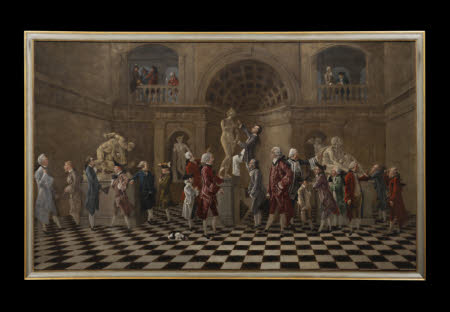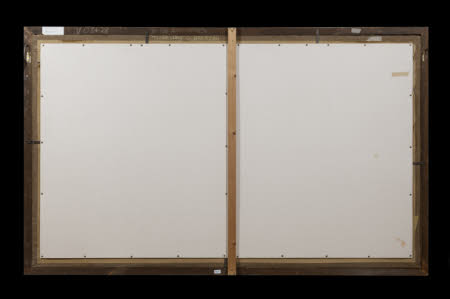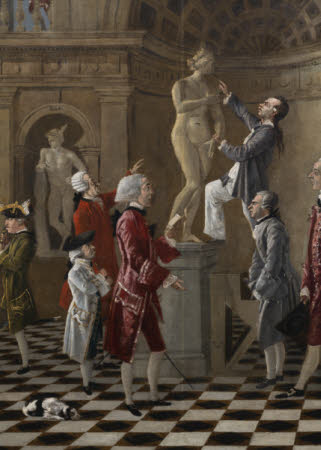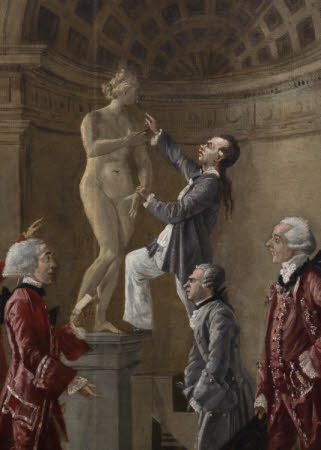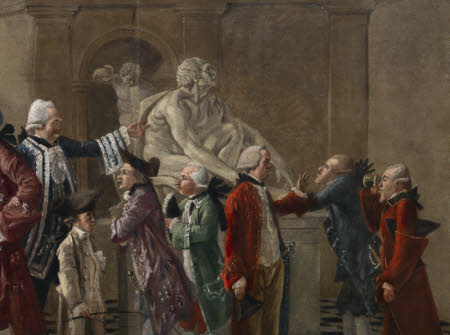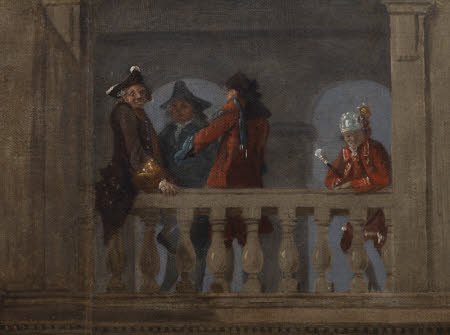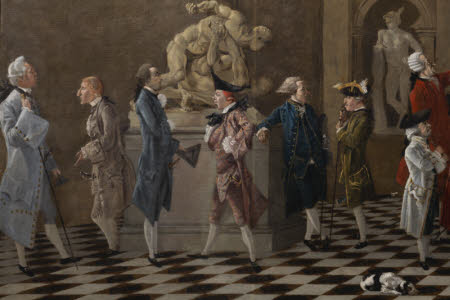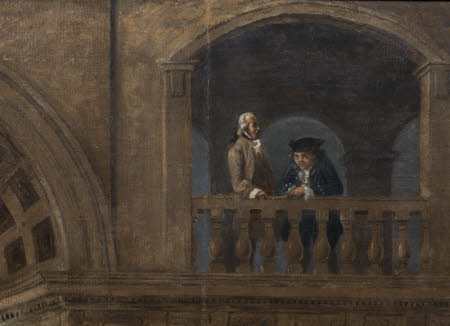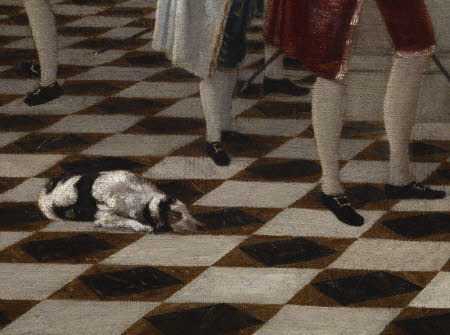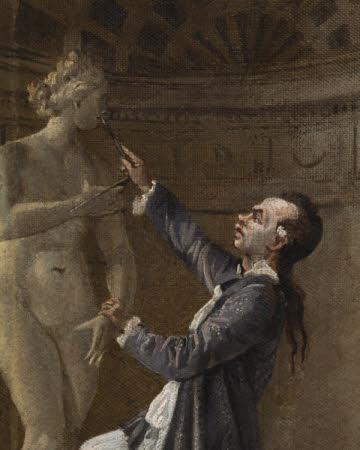A Gathering of the Dilettanti around the Medici Venus
Thomas Patch (Exeter 1725 - Florence 1782)
Category
Art / Oil paintings
Date
circa 1760 - 1761
Materials
Oil on canvas
Measurements
1472 x 2383 mm
Place of origin
Florence
Order this imageCollection
Osterley Park and House, London
NT 267120
Caption
Thomas Patch is best known for his caricatures of British Grand Tourists amid the antiquities of Italy. All of the ‘dilettanti’ in this painting are based on actual figures but few can be positively identified. In the centre, Patch has depicted himself climbing up the pedestal of the Medici Venus.
Summary
Oil painting on canvas, A Gathering of the Dilettanti around the Medici Venus, by Thomas Patch (Exeter 1725 - Florence 1782), circa 1760-1. Five of prestigious sculptures from the Uffizi collection (Florence) are arranged in an imaginary exhibition hall. The hall has a coffered apsidal niche, balustraded balconies and a black and white marble tile floor. At centre is the celebrated statue the Venus de’Medici, and in the niches behind it the Dancing Faun (right) and Mercury (left). The Wrestlers and Arrotino (Knife-grinder) are mounted on pedestals flanking the Venus. Nineteen caricatured men, dilettanti, converse among the statues and some study them. The wear a variety of colourful suits, black wig bags, canes and swords which align them with the stereotyped figure of the 'macaroni'. A small black and white dog lies wearily on the floor. Six more flgures appear on the balconies above. Most of the men can no longer be identified save for the artist who appears at centre. Wearing his favourite seaman’s trousers, Patch climbs a stepladder to measure with a pair of dividers the distance between the nose of the Venus and her wrist. He is being directed by his friend the diplomat and Florentine resident Sir Horace Mann (1706–86). George Nassau Clavering-Cowper, 3rd Earl Cowper (1738–89) and the antiquarian Raimondo Cocchi (1735-75) are also present. One of the central figures could be Robert Lowther (1741-77), the putative first owner of the picture, who was recorded in Florence in May 1760. When Sir Brinsley Ford bought the picture it was divided into four panels to form a screen and has since been restored.
Provenance
Robert Lowther (1741-77), by descent to William, 2nd Earl of Lonsdale (1787-1872); his sale Christie's 18 June 1887 (814) as A. Pond; bought J. Watson; with Lyndon Vicars, Betys-y-Coed; Sir Clayton Russon; Scarisbrick, Bate and Hill Ltd., London from whom bought by Brinsley Ford, 25 October, 1961 and by descent to Augustine Ford. Accepted under the Cultural Gifts Scheme by HM Government from Augustine Ford and allocated to the National Trust for Osterley, 2023.
Makers and roles
Thomas Patch (Exeter 1725 - Florence 1782), artist previously catalogued as by Arthur Pond (London 1701 – Rome 1758), artist
References
Ford 1963 Brinsley Ford, 'Thomas Patch: a Newly Discovered Painting', Apollo, LXXVII, March 1963, pp. 172-6 Paulson 1975 Ronald Paulson, Emblem and Expression. Meaning in English Art of the Eighteenth Century, 1975, p. 142, pl. 80 The Most Beuatiful Statues, a Taste for Antique Sculpture 1500 - 1900, Ashmolean Museum, Oxford, 1981, 28 Picόn 1983: Carlos A. Picόn, Bartolomeo Cavaceppi: eighteenth-century restorations of ancient marble sculpture from English private collections, exh.cat. Victoria & Albert Museum, London, 1983 Grand Tour: The Lure of Italy in the Eighteenth Century, Tate Gallery, London, 10 October 1996 – 5 January 1997 and Palazzo della Esposizioni, Rome, 5 February 1997 - 7 April 1997, 90 Ford 1998 Brinsley Ford, John Ingamells, Francis Russell, John Christian, Nicholas Penny, Jennifer Montagu, Howard Coutts, Timothy Wilson & Dudley Dodd, The Ford Collection – II, Walpole Society, Vol. 60, 1998, pp. 91-376, pp. 159-60, RBF68 Guilding 2014 Ruth Guilding, Owning the Past : Why the English collected Antique Sculpture, 1640 - 1840, Paul Mellon Centre for Studies in British Art, Yale University Press, 2014, p. 239, fig. 228 Garnett 2015: Oliver Garnett, At Home with Art Treasures from the Ford Collection at Basildon Park, National Trust, 2015, pp.30-31 Betzer 2020: Sarah Betzer, 'Patch, Walpole, and Queer Complicity', Art History, Vol. 43, Issue 5, November 2020, pp. 1038-1064, fig. 9
